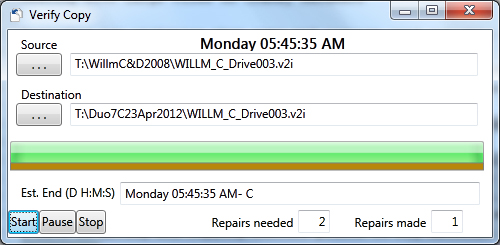

The new standard provides classes like std::mutex, std::lock_guard, a library for atomic functions, and so on. Also, of course sharing data between threads can cause race conditions. This is particularly important when the argument supplied is a pointer to an automatic variable, as above.
#Copyfile msdn windows
The MoveFileEx function is very powerful, but it only supports Windows XP and later operating systems.

Also pay attention to whether the target file is on another volume.

After the operation is completed, Decide whether to restore the attributes back according to the requirements. When you are sure to perform copying and moving to the target file, you can first remove its read-only and hidden attributes. When the target file is included in the file operation, the read-only and hidden attributes of the file must be considered.
#Copyfile msdn code
This article does not involve CopyFileEx, and the code that calls it does not compile successfully in my environment. MoveFileEx also supports the same operation, but sets the MOVEFILE_COPY_ALLOWED flagĬopyFile supports cross-volume operations MoveFile supports cross-volume operations and can move files to another logical partition or physical media. MoveFile does not support the operation of overwriting the target file When using MoveFileEx, consider the read-only attribute of the target file, and when using CopyFile, consider the read-only and hidden attributes of the target file. If the file has a read-only attribute, the attribute will be cancelled, otherwise, the attribute is setīefore setting file attributes, you must first obtain the current file attributes, and then set or cancel certain attributes based on the current attributes to avoid unintentional cancellation of other attributes. ::FormatMessage(FORMAT_MESSAGE_FROM_SYSTEM, NULL, ::GetLastError(), 0, szErr, 255, NULL) If(!::SetFileAttributes(strPathName, dwAttrs)) Test whether a certain attribute is set, take read-only attribute as an example, other similarĬString strPathName = _T("path and name of some file") ĭWORD dwAttrs = ::GetFileAttributes(strPathName) The method of setting file attributes, taking the read-only attribute as an exampleįile attribute operations use SetFileAttributes and GetFileAttributes functions MoveFileEx also supports cross-volume operations, but you must set the MOVEFILE_COPY_ALLOWED flagģ. A new directory must be on the same drive MoveFile supports cross-volume operations, see instructions in MSDN:Ī new file may be on a different file system or drive. This function fails with ERROR_ACCESS_DENIED if the destination file already exists and has the FILE_ATTRIBUTE_HIDDEN or FILE_ATTRIBUTE_READONLY attribute set. MSDN has the following declaration in the documentation of both functions: When the call flag of MoveFileEx is set to MOVEFILE_REPLACE_EXISTING, the read-only attribute of file2 determines the success of the call, regardless of the hidden attribute Test result: MoveFile failed and has nothing to do with the read-only attribute of file2, because it does not support overwriting existing files. Testcase 2: The target file file2 exists, the attribute is read-only After the function returns, file1 is renamed to file2. Test results: The read-only and hidden attributes of file1 have no effect on the above two functions. Testcase 1: Let the source file be c: / file1, the target file file2, and the target file does not exist. The effect of the read-only and hidden attributes of the file on the functionġ.1 Move operation (MoveFile and MoveFileEx) GetFileAttributes, SetFileAttributes, file attribute reading and settingġ. MoveFile, MoveFileEx, CopyFile, file read-only attribute, file hidden attribute,


 0 kommentar(er)
0 kommentar(er)
